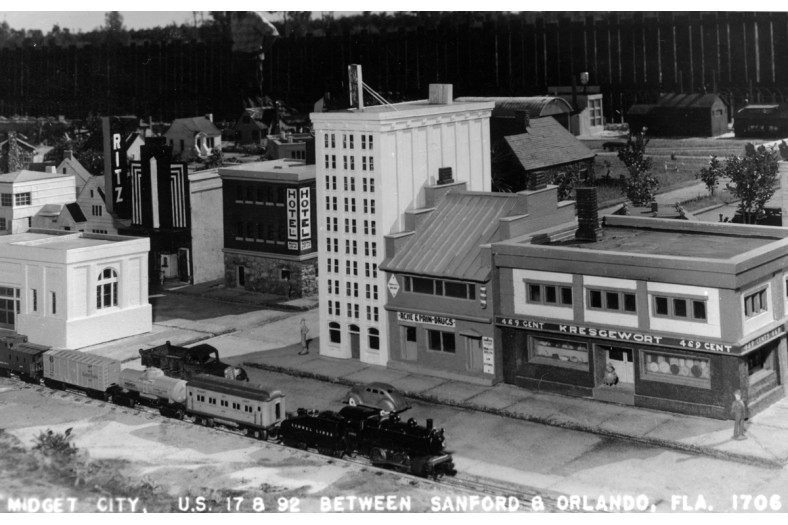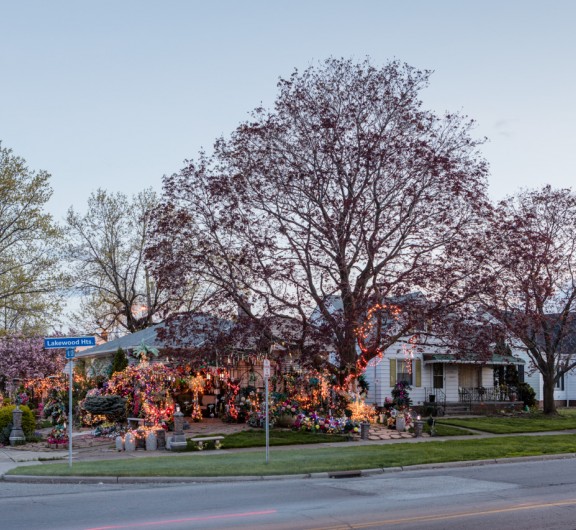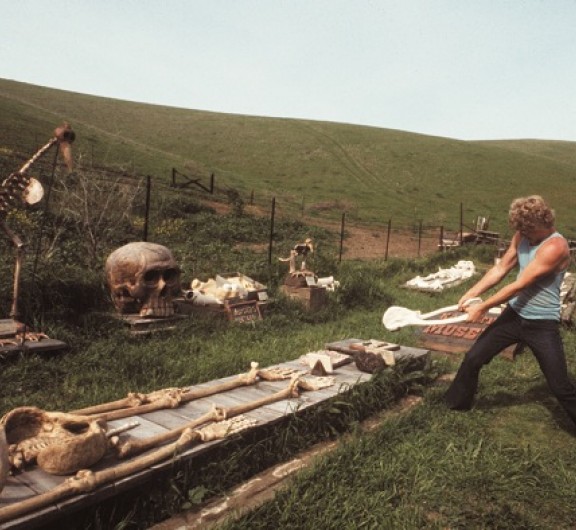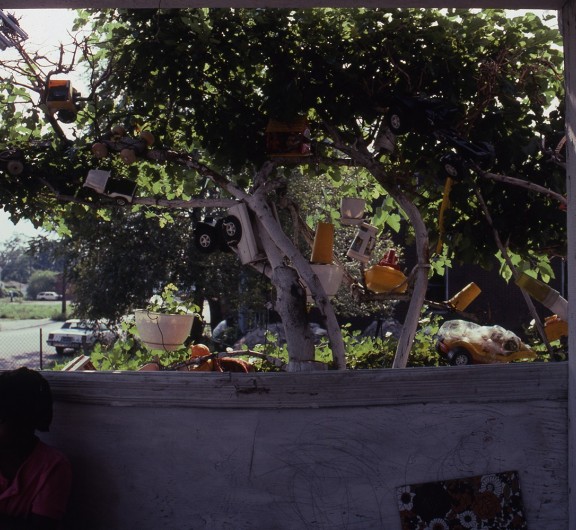Midget CityLloyd Truman Cronk (ca. 1892 - unknown)
Non Extant
Mitiwanga , Ohio, 44846, United States
begun circa 1934
No longer extant, there were four different locations for Midget City. Former locations were 48 Seminary Street, Milan, OH; Cleveland Road East, Mitiwanga, OH 44839; and East side of Highway 17-92, Maitland, FL. The Maitland complex was later relocated to Fern Park, FL, at the Intersection between 17-92 and State Road 436.
About the Artist/Site
Lloyd Cronk owned a hardware store in Milan, Ohio, near Sandusky, Lake Erie, and the Huron River. During the many slack days of the Great Depression, with few customers and fewer prospects, he fantasized about one day owning a sailboat. Knowing he could never afford to buy or build one, in 1933, he purchased plans for a model boat, which he creatively altered as he carved a 26” block of wood, creating his vision of the perfect ship. Although he had had little experience with woodwork, his craftsmanship was meticulous, and he proudly displayed his new creation in the storefront of the hardware store.
Energized by his success, he built a miniature 1 ½-story house, and then a church covered with stone pebbles. Townspeople enjoyed seeing his new creations, and even folks from out of town started coming by the store to see what he had created lately. Cronk figured that if a few handmade objects were good, many more objects would be better, so he continued to build. But within a year his creations had outgrown the space allocated for them in his hardware store, so he decided to bring the work home. He tore out the flower beds his wife had planted surrounding their Seminary Street home, and began building an entire rock village. He floated the original carved boat on a little pond located within. As notice of the rock garden spread and the family began to capitalize on the ever-increasing numbers of visitors, Cronk’s daughter sold snacks and soda and the family asked for donations; in 1936, they erected a wall around the site and began charging admission. By 1937, what had become known as Midget City hosted 25,000 visitors in a single year, and the income was so much higher than that brought in by the hardware store that Cronk retired from that business, becoming the unofficial “mayor” of his miniature metropolis.
By 1940 Cronk had completed over 100 buildings, including a ten-story bank building with 244 windows, a sandstone church sheathed in over 4000 pebbles, farm houses, schools, shops, a mill, a covered wooden bridge, a country club, and even a cemetery. A skyscraper rose only to knee-height, giving an indication of the tiny scale of the rest of the complex. Underground wires lit the entire village at night, and powered the street lights and a narrow-gauge electric train. Mosses and other plants were carefully selected and scaled to mimic mature trees, lawns, and shrubs; he used a small stone cutter to cut the slabs for his buildings’ exterior façades. The family kept the site open from 10 a.m. to 10 p.m. daily.
Then, in 1942, Cronk and his wife Constance relocated to Mitiwanga, on the shores of Lake Erie, and while the original Midget City remained open for three more summers, Cronk also began building anew in his new Mitiwanga site, next to the Patio Tavern, which is itself still extant. This iteration, too, became a complete city with all the required businesses and accoutrements.
But by 1945 Cronk and Constance had tired of the Midwestern winters and decided to move to Maitland, in central Florida; there, Cronk rebuilt again along the east side of Highway 17-92 between Orlando and Sanford, attracting motorists with roadside billboards. Again surrounded by a perimeter fence, this new Midget City was carefully laid out in expansive grids, with paved streets and curbed sidewalks; miniature souvenirs sold in an on-site shop added to their revenue.
By 1954, ready to retire, the Cronks moved to Texas, selling Midget City to local realtors Byron and Louise Kimball, who uprooted the entire construction and moved it several miles down the road to what is today the intersection of 17-92 and State Road 436. Their daughter Kathleen ran the attraction as a teenager, asking donations of 50 cents, but when she left for college in 1958, the Kimballs sold Midget City to an entrepreneur from North Carolina who intended to move it there. Here, however, the trail runs cold, and it is not clear as to whether the complex was ever re-installed. None of the Midget City sites are extant.
~Jo Farb Hernández, 2018
Contributors
Map & Site Information
Mitiwanga , Ohio, 44846
us
Latitude/Longitude: 41.314531 / -82.6159271
Nearby Environments









Post your comment
Comments
No one has commented on this page yet.